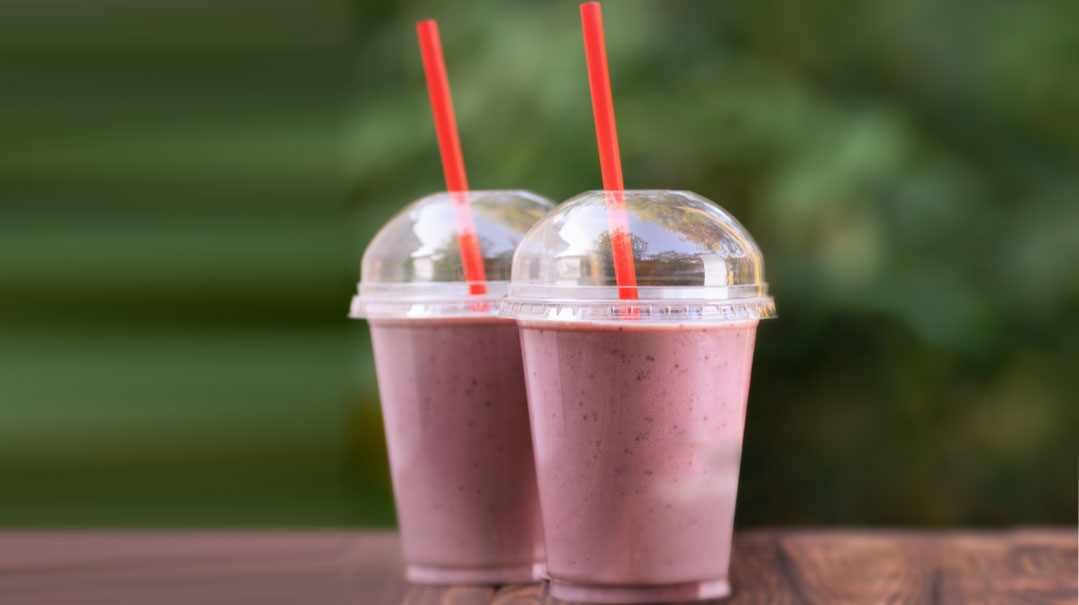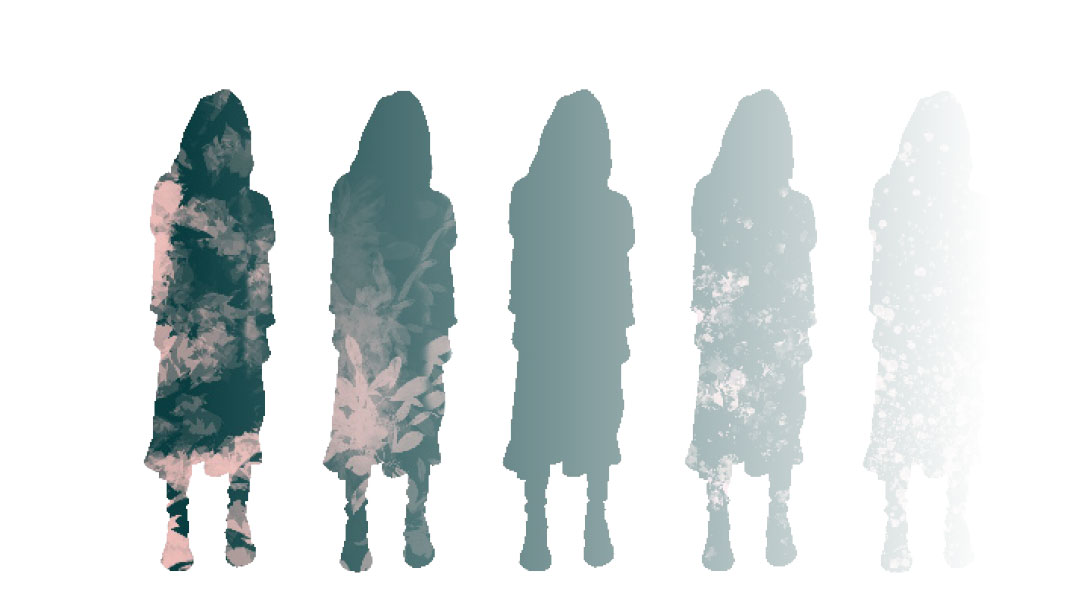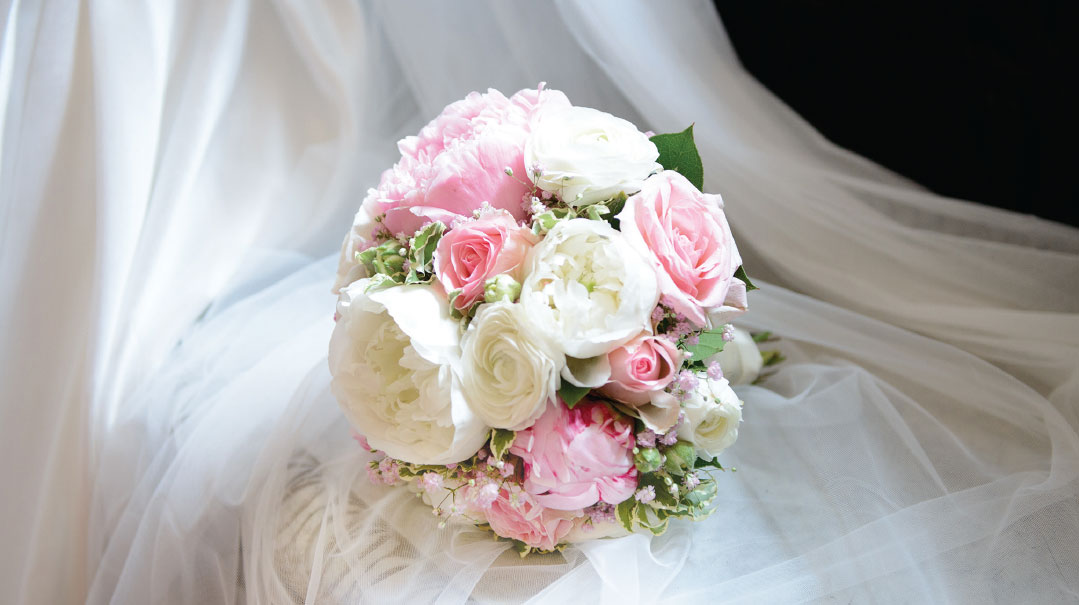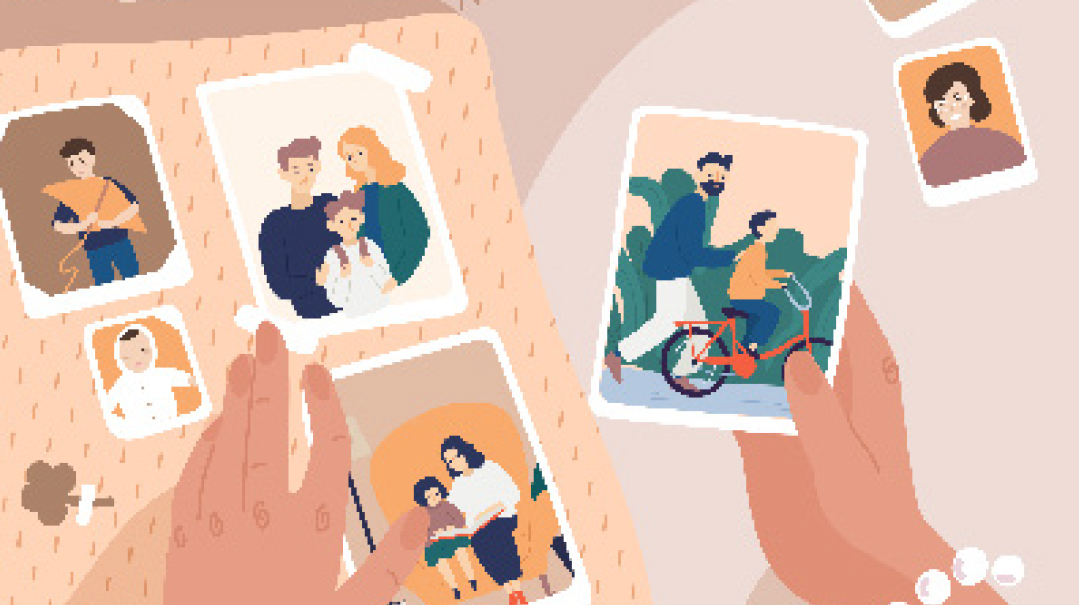The Honey in the Batter

The recipe states “3 or 4 eggs,” but “don’t worry,” Mommy told me then, “this is a forgiving recipe. It always comes out.” And it does.

Photo: Shutterstock
M
y daughter is coming tonight and I want to give her honey cupcakes. It’s almost Rosh Hashanah.
As I pull out my recipes that I keep in a painted metal box I notice how old some of them are. Fanning the index cards out on the white kitchen table one of them dark with age and streaked with coffee or grease from long ago when it sat unheeded on my kitchen counter takes me back. It’s written in a neat cursive that I don’t recall possessing but I must have because I wrote it down when I called my mother and got the details from her the expert. She didn’t quite remember how many eggs it needed so the recipe states “3 or 4 eggs ” but “don’t worry ” she told me then “this is a forgiving recipe. It always comes out.” And it does.
I’ve never failed when baking my mother’s honey cake or her wonderful cupcakes. The flavor varies from sinfully delicious to just very good but it doesn’t ever flop even if I omit an ingredient or two — with the exception of course of the honey. My mother’s honey cake doesn’t contain brown sugar nuts or the adulterants commonly added today. It’s sweetened with one full pound of honey. My mother used Golden Blossom poured from the jar. When I was little I’d stand beside my mother and watch the clear syrup swirl gently into the batter.
First Mommy “made a well” as she explained. I’d pull a chair to the counter stand and watch her work. My mother seemed tall to me then though she was only about five-foot-two; she usually wore a cotton shirtwaist dress covered by a colorful print apron that contrasted with her kerchief-covered soft brown hair and eyes.
With her wooden spoon she pushed the flour to the sides of the big bowl and poured honey eggs and coffee into the center of the flour. Then holding the small hand mixer (Mom never splurged on a fancy stand machine) she mixed the sticky batter until all the lumps were gone. She poured it into 24 paper-lined cupcake tins; there was usually enough batter to make a small cake as well. I never understood why a well was needed if ultimately all would merge together but when I was little I didn’t question merely observed from my perch on the chair beside the narrow counter.
In our kitchen in Brooklyn my mother was a cupcake master long before they became popular inManhattan. She had a precise mathematical mind and understood that cupcakes bake more quickly than full-sized cakes and furthermore don’t require slicing with the attendant crumbs as all are neatly contained within the pastel paper holders. There were six of us then so details like crumbs were important to my mother.
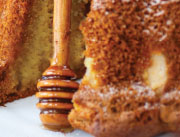
She baked most Fridays for Shabbos; if my father bought cake from the kosher grocery store she took it as a personal affront. “I baked already” she’d say sharply. My father would usually apologize but I suspect he liked the frosted bakery seven-layer cake and bought it intentionally. Now that I’m older I understand her frustration at being eclipsed by the store-bought cake but back then I sided with my father. After all she could have told him not to buy a cake before he went shopping. Mommy didn’t work that way though. She was not a woman of lists or planning.
Everything was accomplished in a whirlwind of motion — washing windows, floors, dishes (though dishes were her least favorite job), making beds, and putting clothes in the hamper until, at some point, she would collapse from sheer exhaustion.
She was a small woman, wiry and quick and not particularly strong, but things happened when she was there. I, her oldest daughter, was more like my father, tall, chunky, and slow-moving. At the time, I thought that my mother and I were alike only in our coloring — brown hair and eyes with fair skin; my father’s eyes were blue.
I was certain that my mother found it difficult to understand me, almost as though I were a foreign being dropped from a different planet. I was sure that she was more comfortable with my little sister, a feisty baby who quickly learned to scream whenever she wanted anything. “She’s spoiled,” my mother would say, but with a lilt in her voice. My mother was never angry when my sister sampled cake batter and smeared it all over her face and clothing. I, six years older, carefully used the spatula to get the remains of the batter left in the bowl and was always careful to keep my dress clean.
Much of my childhood, I was convinced that I couldn’t get things quite right. Many times, I’d come home from kindergarten with a torn dress. “What happened to your dress?” my mother asked, but I never knew the answer. I tried to make my bed, but couldn’t get rid of the lumps that appeared beneath the blue corduroy bedspread.
“I need to figure this out,” I’d say stoically, but my mother was already gone, hanging the laundry outside with wooden clothespins or pulling the clothes back in. She never folded, though. She considered folding to be a waste of time, putting the socks in the right drawer was more than enough. Mending went into a blue cloth bag that my mother said was “to be outgrown.” She also detested ironing, but would on occasion — those years before non-iron shirts were invented — iron. She used her own time-saving system: She placed a tablecloth on the ironing board beneath the shirt, so as the shirt was ironed, the tablecloth would be ironed too.
Baking was by far my mother’s favorite activity. Most of Mom’s recipes were in her head; there were few recipe books in those years and certainly no kosher ones, though she had a small booklet that she would pull out each Purim when it was time to make the traditional hamantaschen filled with Simon Fischer prune lekvar. She would very occasionally bake chocolate cupcakes, but her favorites were honey and sponge.
One morning when I was about four years old, I woke up and found the tables covered end-to-end with honey and sponge cupcakes, each variety on its own round plate. It was Rosh Hashanah, just as it almost is now, as I hurry to prepare for my own daughter’s arrival. Back then, when I walked into the room and saw the surprising number of cupcakes, more than I’d ever seen in one place before, my eyes opened wide and my breath stopped for a minute. Then the men started filing in.
They filled the living room, recited Kiddush, and partook of the cupcakes. In short order, they were all gone and the men left as quickly as they arrived. I don’t remember if I ate a cupcake or not; I think I did but can’t be certain. I was a dreamy child and as much as I wanted a cupcake, I was overwhelmed by the sudden arrival of so many men in our small apartment.
What I remember most is watching my mother bake; that was when the magic happened — eating was secondary. My other memories are splashes of vivid color on the otherwise vast white canvas that was my childhood: a pale blue ruffled dress that I wore on a holiday, a blonde doll in a tall box, brown wooden chairs in the synagogue, fluffy white beaten egg whites. My emotions were big, and I often retreated deep into the world of books and song. I always loved music and would play the few records we owned, Quick Draw McGraw: Coming to Town, over and over again.
When I was nine, my parents bought a two-family house near Bensonhurst, a few blocks away from that first apartment. Actually, as with most decisions, my mother was the driving force behind that purchase, and my father agreed. She didn’t like being in the apartment block, trying to keep her small children quiet, and hiding from the neighbor’s “helpful” comments. She was a private person, an introvert, and needed space. The new house had a tiny Hollywood kitchen with fashionable speckled Formica countertops and brand-new wooden cabinets, which were well matched in size to my diminutive mother, but not to my father and me. The fridge was in the eat-in dinette because the kitchen was too small to hold it.
After we moved, Mom still baked the honey cupcakes. The taste didn’t change, though much in our lives did. We no longer had the blue bar in the kitchen where we children always ate our meals, but instead had a white table overlaid with gold speckles in the dinette. I was growing up, my childhood fog was lifting. I could walk to the Brooklyn Public Library and often did, reading my new book, usually children’s fairy tales, on the way home.
The oven that my mother used for her baking was different, too. It was a wall oven built into the varnished wood cabinets of the new kitchen. I thought it was very chic and was surprised in later years to see how small it really was. My mother could not fit two full-sized cupcake trays side by side on the narrow oven shelf. She resorted to baking a tray of 12 cupcakes with a half-tray of six alongside.
The day she found the narrow tray, she glowed with excitement. “Look what I found!” she said, waving the metal tray in the kitchen. “Now I can bake 18 cupcakes instead of only 12.” Although I loved seeing the happiness on my mother’s face at that moment, I regret that I did not share the excitement. As a nine-year-old, 18 cupcakes or 12 — there were never enough anyway.
The oven was a manual gas oven that my mother lit using a match. One day, when I was 12, the flames underneath did not ignite immediately so she tried again with a second match. When the oven finally ignited, a fireball exploded in her face. The next day, her face was beet-red and blistered. As always, she left for her job as a math teacher at John Jay College of Criminal Justice located in Manhattan. I was very perturbed.
“Mommy, you went to teach with your burned face?” I asked that evening. “Weren’t your students absolutely horrified?”
“Oh, no,” she laughed. “It’s a class of firemen this semester, and they all wanted to know how I got the burn. They were fascinated by the exploding oven.”
My mom taught me something new that day — not all people were as engrossed by appearances as I was and, also, how to carry on. My mother never missed a day of teaching — except for Jewish holidays, for which she scheduled makeup classes. No matter what, the show must go on. And it was a show; she felt obligated to entertain as well as teach.
Sometimes, she would come home and sigh, “They didn’t get my jokes today.” Nothing made her as happy as a class that understood her offbeat humor, the same humor she used on the occasions when my father fell asleep on the living room couch. “The war is over!” she’d announce. “You can sleep in a bed now.”
Fortunately, my mother’s face soon healed without scarring, the oven scare was forgotten, and she went back to baking as always. She did, however, light the oven more cautiously.
Once, Mommy tried a fruitcake laden with nuts and fruit, steeping it in liquor for weeks. I thought the result was delicious, but she never made it again. In the summers, if we picked blueberries on vacation, she would bake a blueberry cake, luscious and richer than the regular sponge, using the old-fashioned oven in the wooden bungalow. But usually, it was honey and sponge, week after week, year after year, until one day, I was grown up.
Then suddenly I was getting married, and although that took my mother by surprise, she went into her perfect whirlwind form. Three days before my wedding, she bought a long pink gown trimmed with pearl beads; she was as slim and tiny as the day she herself got married 22 years earlier.
“You certainly waited for the last minute with this!” the jovial saleslady exclaimed as my mom stood resplendent in the flowing chiffon dress. “You didn’t leave much time for alterations, but no matter, we’ll take care of you.” She pinned the places where the dress needed to be taken in and promised that it would be ready in time. And it was.
Mommy was calmly elegant as she escorted me to the canopy where my future husband waited, baby faced and handsome. My youngest sister, born when I was 15, was the flower girl. She ran ahead, neglecting to strew the petals as she ran. I floated in the moment, a magical second when fears of the past were lost in the cusp of the future.
A few years after my wedding, I moved with my family to Rockland County. My mother, who always traveled via subway and never owned a car, found the distance challenging. Resourceful as ever, she found a solution. On days that she finished teaching early, we would meet in Manhattan at Grand Central Station during my work lunch hour. As always, Mommy supplied the food: bags of Bazzini nuts — she showed me the kosher symbol on the packages — two steaming cups of coffee, and on occasion, a cupcake or two, though by then she baked less frequently.
When we met for those midday breaks, it was always her first meal of the day, as she rarely had time for more than a cup of coffee before rushing off to work in the morning. We would sit on the cold subway steps in our winter coats, disregard the No Sitting signs, and munch on the nuts.
By that time, a mother myself, I no longer felt different from my mom. I felt that we could be sisters rather than mother and daughter. I would tell her about my boss, and she would tell me about her classes, her recipes, and sometimes non-Euclidean geometry as well.
“If you change the original postulates, you have a whole new branch of mathematics,” she’d tell me after swallowing some coffee, and I’d marvel at the unusual baker-mathematician-mother I had.
In her later years, she starting baking a jelly roll, using the same sponge cake recipe and rolling it up instead of pouring it into the 24 paper-lined cupcake tins. When it was baked, she would fill the roll with jelly or, rarely, chocolate cream. She would slice the cake and serve each spiral on a small china plate.
I don’t ever remember anyone serving my mom, even on Mother’s Day, although we did sometimes buy her a gift. I wish I could replay scenes of my adulthood and do it differently. “Mom,” I would say, “please put your feet up. I’m bringing you coffee and milk chocolate with almonds.” Or sticky dates, those were her favorites —although I have the feeling she would not have stayed seated for long anyway. There was the next project to do, more cakes to bake. But I could have persuaded her with an interesting math book, or maybe fascinating fractals with the coffee.
I imagine that Mommy might have continued to bake and serve, maybe get older, walk with a cane and hobble in the kitchen while still baking. She did complain that walking down steps hurt her knees, but still barely slowed down.
When my father had a stroke, though, her life changed. My siblings would visit, creased by worry, and wonder how well my father was eating. No one was interested in cake. And my father was no longer capable of helping. Though she had always taken charge of the home, he had been her quiet support, and she couldn’t manage without his help. She struggled with the electric bill, reading every line, trying to understand each word.
“Just write a check and send it off,” I suggested. “Don’t bother understanding.” She stared at me, lack of comprehension in her soft brown eyes. Though mathematical equations were her bread and butter, the electric bill confounded her.
“Let’s go shopping,” she said over the phone a few weeks after that conversation. “I want to buy you a coat.” For a second, I felt like a teenager; I remembered shopping for a coat with my mother and my suddenly too-long arms sticking out of the navy blue worsted sleeves. “We can lengthen the sleeves a bit,” she had told me then, “otherwise the coat fits you perfectly. Like a dream.”
“Sure, Mom,” I said, my voice quickening with anticipation, almost as though I were young again. I knew the new coat was an excuse; she simply wanted to see me. But then my life’s reality set in, Monday wouldn’t work, some dentist appointment probably, and Tuesday wasn’t so great either. “How about I come Wednesday after I finish work?”
“Okay,” she said. But on Wednesday we never did go shopping for a coat. In the morning, she didn’t feel well and my brother-in-law rushed her to the hospital. And suddenly she was gone, the doctor shocked at how quickly she slipped away, one minute alive and talking, the next minute gone, as light and elusive in death as she was in life. The role of caretaker was too much for her to bear, after all.
“I never thought she would die before me,” my father said over and over. “I never thought this would happen.” The yeast was gone from our lives, or maybe it was the baking powder that was missing — after all, there never was any yeast in that honey cake.
Today, more than ten years later, I rarely eat cake, although I do bake. I still have Mommy’s honey cake recipe, worn and stained, but I no longer have her recipe for sponge cake. When I was a young married, I called her several times and wrote it down — flour, eggs, sugar, baking powder, separate the eggs, make a “snow” — but now I don’t know the exact proportions.
Tonight, I can only bake the honey cupcakes for my daughter; the sponge is lost to history. As I rush about in the kitchen, a pale reflection of the whirlwind that was my mother, I suddenly understand that we were connected by so much more than just our coloring; I was never a foreign being to her. She poured love with the honey; I saw it as a little girl and now pour the same love for my daughter.
I stare at the old index card with my mother’s recipe, I see that my pencil scribbling is faded. I should have written it down clearly with pen and ink. Those days, I thought I could always call Mom and get the recipe again.
To get Leah’s mother’s honey cake recipe, turn to Family Table, page 44.
(Originally featured in Family First, Issue 508)
Oops! We could not locate your form.



